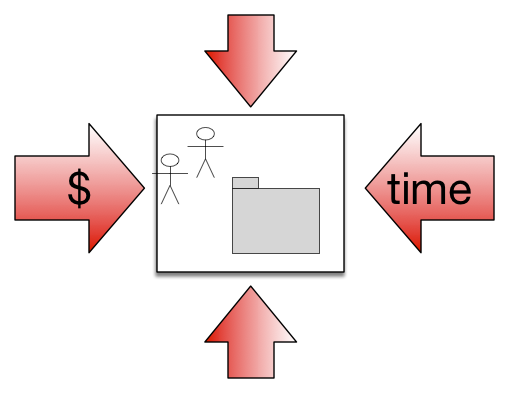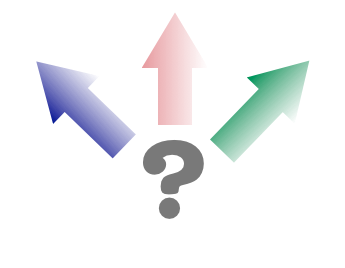arc42 Software Architecture Template
Marcel Baumann (tangly llc)
Agenda
What is software architecture?
What is arc42?
Sections in arc42
What is Software Architecture?
All architectures are design, but not all designs are architecture.
Architecture represents the set of significant design decisions that shape the form and the function of a system, where significant is measured by the cost of change.
Ideas
What should we document and communicate about our architecture?
How should we document and communicate it in an agile environment?
How can we minimize the effort for the software architecture documentation?
How can stakeholders access the versioned documentation?
Known Problems
Not existing or outdated documents
Confusing and without a clear structure
Process-oriented instead of result-oriented
How instead of WhyPainful to maintain
Concepts
Documentation as code under version management
Optimized for understandability and adequacy
Developers are interested to create and maintain the documents with manageable effort
Follow standard to reduce training and internal resistance
arc42 Sections

1 - Introduction and Goals

Business goals and essential features
A short description of the requirements
A few quality goals for the architecture
List of important stakeholders and expectations
1: Tips
| Prefer | Avoid |
|---|---|
Provide context | Do not skip this |
Cover the important bits | Avoid going into details |
Use diagrams C4, UML | Do not make this too long |
Use concrete examples specification by example | Avoid verbosity |
2 - Constraints

Anything that constrains teams in design and implementation decisions.
Environmental and legal aspects
Company-wide or organizational constraints
Technical limitations
3 - Context and Scope

Separate your system from its external systems and users.
Specify the external interfaces shown either in a business and technical perspectives.
List of communication interfaces
3: Tips
Select tools which can be integrated into our continuous delivery pipeline
Prefer artifacts you can store in Git
Follow standards
4 - Solution Strategy
Fundamental decisions and solution strategies
Technology decisions
Top-level decomposition
Approaches to achieve top quality goals
Relevant organizational decisions such as the development process
5: Building Block View

A static decomposition of the system, shown as hierarchy of white boxes up to the right level of abstraction. Elements are modules, components, subsystems, classes, interfaces, libraries, frameworks, or partitions.
Historical Background
UML and 4+1 Architectural View heavily influence the arc42 approach.

C4
C4 Model is a model is a set of hierarchical abstractions
System Context View shows the system scope
Container View decomposes the applications and data stores
Component View decomposes containers into interrelated components
Code View provides details about the design and is based on UML
System Context Diagrams

Container Diagrams

Component Diagrams

Code Diagrams

6 - Runtime View

Behavior of building blocks as scenarios, covering use cases, operation, administration, error handeling and features.
Examples for this might be UML sequence, activity or state machine diagrams.
6 - Tips
Runtime scenarios explain important application behavior
Maintaining runtime scenarios is expensive
You often can explain behavior with unit tests to document how the system behaves
7 - Deployment View

The technical infrastructure with environments, servers and topologies.
Mapping of building blocks to the right infrastructure.
UML offers deployment diagrams to express that view
7 - Tips
You can often describe your system topology with a Docker compose file.
API are described with {ref-openapi}.
8 - Crosscutting Concepts

Principal regulations and solution approach relevant in multiple parts of the system.
domain models, architecture patterns and design patterns
rules for using specific technology, technical consequences of overall decisions
implementation rules
8 - Tips

9 - Architecture Decisions

Important, expensive, critical, large scale or risky architecture decisions including rationales.
Use the Architecture Decision Record ADR approach to document such decisions.
9 - Architecture Decision Record

Smaller pieces of documentation are easier to read, create and maintain. When it comes to architecture decisions, development teams often will:
Know about the decision, as it is visible in the source code
Miss the motivations behind that historical decision
10 - Quality

Quality requirements as scenarios. The quality goals can be taken from section 1 Introduction and goals.
10 - Tips
Explore fitness functions
Use static code analysis
Write automated unit and acceptance tests
Install monitoring
Promote defect-driven development
11 - Risks and technical Debt

The known technical risks or already present technical debt.
What potential problems exist in the application itself or its surroundings?
What does the development team fear for the future?
11 - Tips
Risk management is project management for grown-ups.
— Tim Lister
Each risk has a description, an associated cost, a probability, and a set of mitigation measures.
12 - Glossary

Important domain and technical terms that stakeholders use when discussing the system.
Translate in other languages if there are multiple languages spoken in your company.
Lessons Learnt
Effort
I generate most of the content into the following sections:
5 - Building Block View
8 - Crosscutting Concepts
9 - Design Decisions ADR
13 - User Interface
